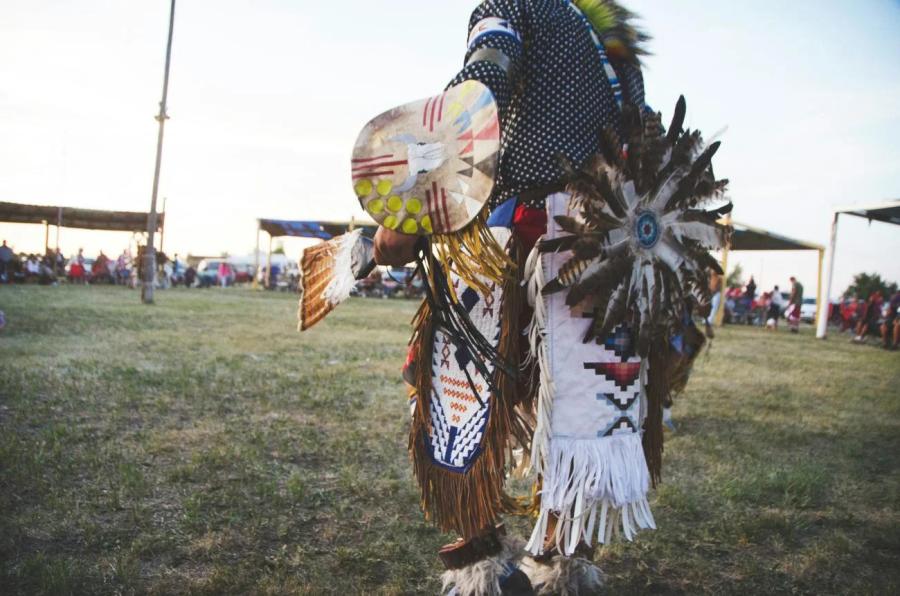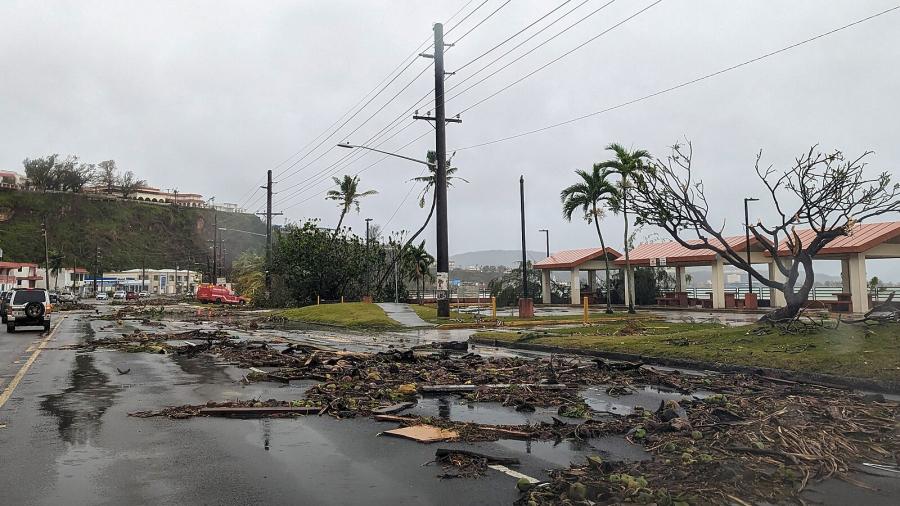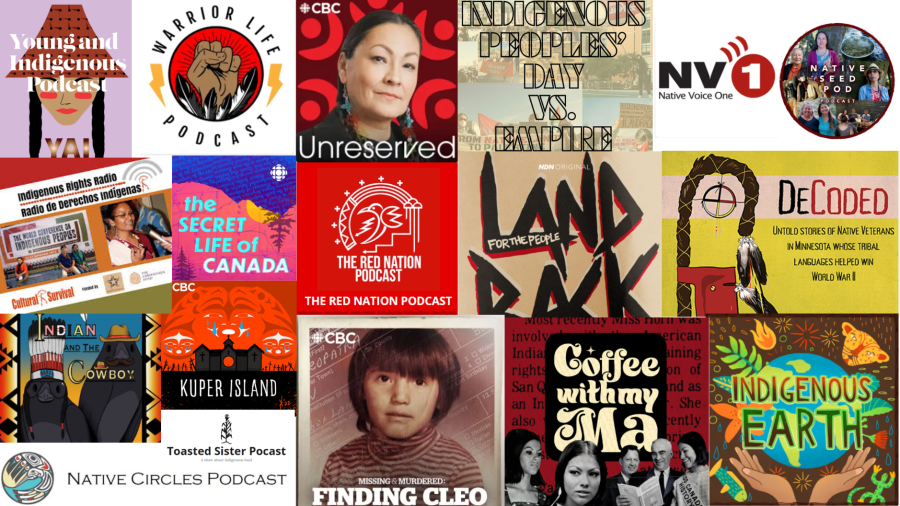The first tribally owned wind generator was dedicated on the Rosebud Reservation on May 1. The Intertribal Council on Utility Policy (Intertribal COUP), which represents northern Great Plains tribes and promotes wind power as an alternative to less-sustainable energy generation such as coal power, hopes the turbine will set the foundation for a broad wind-generating plan for the region’s tribes (see CSQ 27:2). CSQ Managing Editor Tara Tidwell recently spoke with Intertribal COUP Secretary Robert Gough about the new turbine and what it means for the future of energy generation on tribal lands.
Tidwell: How did the dedication ceremony go?
Gough: We had an actual natural unveiling of the turbine. All day on April 30 was pea-soup fog, so as it started to clear, the turbine was revealed. We had tribes from North and South Dakota, Wyoming, Montana, Nebraska, and as far away as Washington State. We had a number of officials from Senator Dashle’s and Senator Johnson’s office, representatives from the Department of Energy, the Department of the Interior, the National Renewable Energy Lab, the Department of Agriculture, Renewable Energies Services, a South Dakota state representative, a public utility commissioner from South Dakota, Basin Electric, Cherry Todd Electric (a local co-op). There were also leaders from the Intertribal COUP tribes. Everyone was delighted to see this project off the ground and generating power. It’s the first large-scale utility in Indian country—there have been smaller ones—and it’s also the first to have green tags sold.
CSQ has covered the green tag program before. Could you tell us about how green tags are being used now that this turbine is up and running?
Some were sold to Ellsworth Air Force Base in western South Dakota, through contracts with Basin Electric and Western Area Power Administration, as part of the first sale of tribally based green power to the Department of Defense. The rest of the green tags were sold to NativeEnergy in Vermont. This company bought the rest of the lifetime output for the turbine, about 25 years, and presented the tribe with a check upfront for the purchase. They have been reselling those tags to Ben and Jerry’s ice cream, the Dave Matthews Band, the Rolling Stones, the Natural Resources Defense Council, and also there were representatives of Clean Air Cool Planet, which has an agreement with NativeEnergy that people who buy those tags can have them retired, taken off the market. So any energy consumer in the world could buy these green tags as a way of supporting energy renewal development. Consumers could offset their own energy consumption to make sure there is an equal amount of wind power off the power grid to match their energy consumption. This green tags program can really bring cash upfront to help offset the startup costs of renewable energy. The overall project is just a little over $1 million. The turbine itself was about $750,000 to install the turnkey—about $1,000 per kilowatt for generation at that scale.
How can energy consumers find out about purchasing these green tags? Contact NativeEnergy.
Their Web site is www.nativeenergy.com.
What economic benefits have you seen so far from this first operating turbine? At the dedication the Rosebud Sioux Tribe was presented with a check from Basin Electric, through whom we are selling the power to Ellsworth Air Force Base, representing two months’ worth of sales. The tribe was very pleased to see a project that had such immediate economic results. We’ve established some energy accounts. One deals with Western Area Power Administration for the tribe's hydropower allocation and another will hold the funds from the sales of energy to Basin Electric and "green tags" to Ellsworth Air Force Base and NativeEnergy, and will be used to repay the RUS [Rural Utilities Service] loan and for additional tribal energy activities.
What environmental benefits have you seen so far?
This particular turbine was developed to provide local folks an opportunity to see how clean and sleek and quiet these machines are. It just turns so gracefully in the wind there. Knowing your electricity is coming right out of the wind, and that process is keeping those winds cleaner, is very satisfying.
I was taking a photograph of a small wind turbine used for pumping water, with the large, new turbine in the background, from a dirt road going through the neighboring pasture. The non-Indian rancher drove by in his pick-up truck, smiling at me standing on the roof of my car for the shot. He said the scale of this [type of energy generation] has sure changed, but it looks beautiful. We’ve had no complaints of any kind from anybody. And if there was a problem we would hear about it. People respect the power of the wind and to see it actually working for us and producing electricity is great.
Now that a turbine is up and working, have you seen any changes in your relationship with the federal government?
This turbine could have been simply a stand-alone project and the tribe would have been pleased enough. This is really a show horse. It’s there at the casino to get high visibility—we’re going to have information kiosks to teach people about it. But this project was also designed to take us through all the steps we need to learn to build more of these. There’s a lot more than just putting up a wind turbine and connecting a few wires. With wind turbines you’re connecting into the North American electricity grid, the largest machine in the world, which involves a lot of rules and policies. We’ve used this as an opportunity to learn how to do this on a larger scale, and we are sharing that with any of the other tribes that are interested.
We’re learning that most of the rules of the road in how the grid is operated were not designed with renewables in mind. They were designed to meet the particular characteristics of the existing generation—hydro, coal, gas, nuclear. A lot of those regulations and rules need to be looked at and may need to be reconsidered to make sure that large-scale renewables also have access to the grid. That’s part of what Intertribal COUP is very much involved with. We’ve been working with the National Wind Coordinating Committee [NWCC], which is composed of utility industry people, wind developers, wind manufacturers, advocates, power marketers, almost everyone whose jobs or industry is touched by the potential for wind energy development, and we’ve represented tribal interests in that forum. So we’ve come to learn a whole lot about the energy system. NWCC principles have been developed for how to make the rules for the grid more generation-neutral, ways to level that playing field and put renewables in peoples’ minds. You can find out more at: http://www.nationalwind.com/.
So where do you want to go from here?
We are planning a 30- to 50-megawatt wind ranch out in western South Dakota. It’s often too dry for farming, and there’s a lot more ranching going on. We kind of think of wind as more appropriately ranching than farming. In farming, you have to keep going back to take care of it—it’s an awful lot of work. Whereas the turbines you put out there and let them work themselves. We’re looking at more clustered kinds of arrangements. Usually the wind farms are very tightly packed in a crowded area because of land ownership. The tribes have an abundance of windy lands available, which gives us an opportunity to maybe scatter them more in different parts of the reservation. Intertribal COUP also has an Enviromental Justice Community Revitalization plan for an 80-megawatt project to be spread out in 10 megawatt clusters over eight separate reservations in two states. This could achieve a greater economy of scale than eight separate 10 megawatt projects, and would serve to get a number of reservations on the grid for future expansion. Such intertribal cooperation can bring down the cost of such projects, build tribal capacity and reduce the development risks to any one tribe. We are interested in working with our federal treaty partners (the various federal agencies) in developing markets for such green power.



